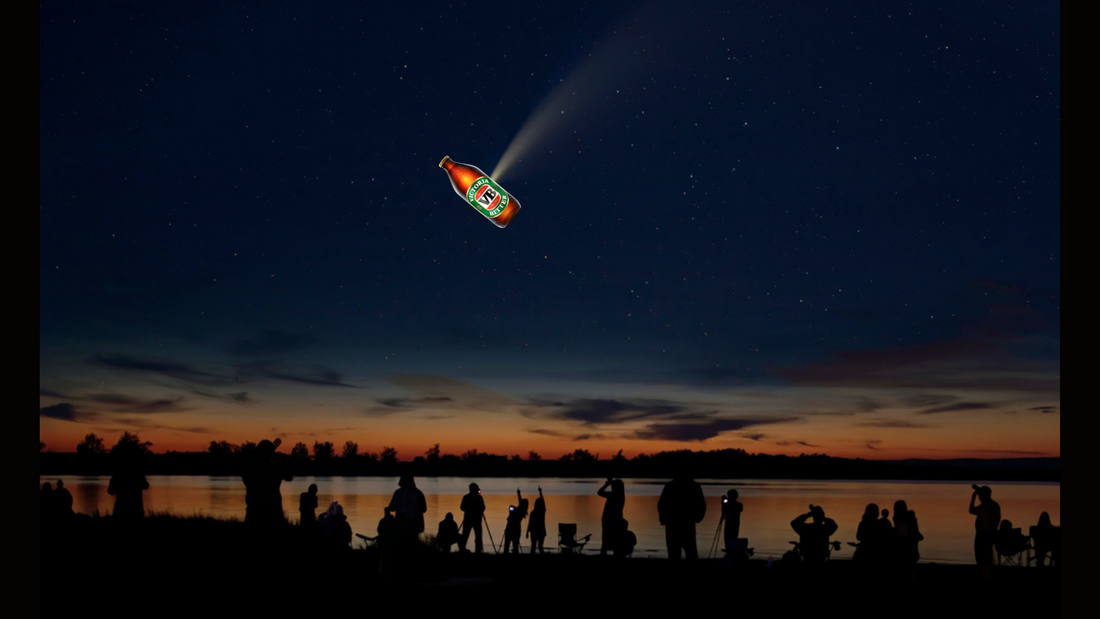
Booze Soaked Comet Regularly Goes "VROOM" Past Earth, Telescope People Reckon
Share
Comets are booze ridden floozies that ride into the inner Solar System looking for a good time.
Sure, they rock up because of a little warmth, and then like any other uninvited drunken house guest, they start ejecting alcoholic compounds into space. Or if taken literally, your space, as in your house.
Comet 46P/Wirtanen, which visited the inner Solar System in 2018, takes the booze infused cake. According to an analysis of its atmosphere, or coma, it was emitting a lot of alcohol.
This can tell us some really interesting things about the solar system.
"46P/Wirtanen has one of the highest alcohol-to-aldehyde ratios measured in any comet to date," said cometary scientist Neil Dello Russo of Johns Hopkins University Applied Physics Laboratory. "This tells us information about how carbon, oxygen, and hydrogen molecules were distributed in the early Solar System where Wirtanen formed."
In the inner Solar System, comet 46P/Wirtanen is a regular visitor. It swings around the Sun every 5.4 years, sometimes coming so close to Earth that it can be seen in the night sky.
On its last visit, in December 2018, it came within 11.6 million kilometers (7.2 million miles) of Earth, about 30 times the distance between Earth and the Moon.
Astronomers used the Keck Observatory's recently-upgraded Near-Infrared Spectrograph (NIRSPEC) to study this comet up close.
Scientists can collect data on the sunlight that shines through the comet's coma so they can analyze it to figure out what the comet is made of.
The outer Solar System and the early Solar System can be figured out from cometary comas. Comets differ from asteroids in that they're filled with frozen compounds - ices - that got trapped inside them when they formed, hence the nickname "dirty snowball".
When a comet approaches the Sun, its ices start to sublimate. This dislodges dust and makes a dusty, gaseous envelope.
Due to solar wind and radiation pressure, this material forms the comet's tails of gas and dust.
It also contains information about the composition of the cloud from which the Solar System itself formed because it has been locked in a comet since its formation - when it was still a baby - until it sublimated.

The "naked eye" comet 46P/Wirtanen at a respectable altitude and brightness.
The comet's coma is composed of several different compounds of nitrogen, ammonia, ethane, formaldehyde, hydrogen cyanide (which breaks apart to form cyanogen, which gives the comet its green color), methanol, and water.
Using NIRSPEC data, the scientists found something really strange about the temperature of the coma. There was more heat than just the sun could explain.
"We found that the temperature measured for water gas in the coma did not decrease significantly with distance from the nucleus, which implies a heating mechanism," said astronomer Erika Gibb of the University of Missouri-St. Louis.
The heating mechanism isn't clear, but there are lots of possibilities.
Some molecules in the coma, close to the nucleus of the comet, could have been ionized by solar radiation, which would release electrons. Electrons can collide with other molecules and transfer energy, which is released as heat.
Another theory is that chunks of ice broke off the comet, tumbled away from the nucleus before sublimating and releasing energy by colliding with the cooler cloud at a distance rather than closer in. Team found a higher proportion of water in the outer coma than other compounds, which is consistent with this model.
Perhaps this explains how Earth got water. Even though the water ice sublimates at the comet, it may go back to liquid or ice when it hits a planet.
There are other ingredients for life on comets, so these dirty snowballs could be vital not just for our own existence, but for life everywhere.
"Comet studies like this are exciting because they serve as a launchpad for answering the million-dollar question – are we alone?" said astronomer Greg Doppmann of Keck Observatory.
"The organic compounds on comets tell us what ingredients formed our solar system and served as precursors to life. We can then look for these same prebiotic molecules in other planetary systems, which opens an exciting door to the very real possibility of finding microbial life beyond Earth – not in our kids' lifetimes, but our own lifetime."
If you've made it this far...
Perhaps you're willing to delve a little further, traveller?
For more space, more science, and a lot more ARSE, join our inner circle of supporters at www.spacesociety.com.au
#Space_Aus




